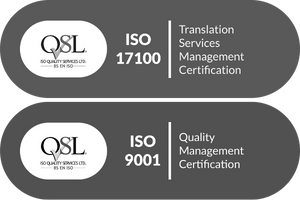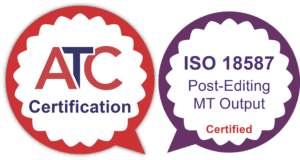In this short video, Linguava CEO David Brackett shares three practical ways to improve communication when working with a healthcare interpreter. He highlights the importance of pre-session introductions, speaking at a patient-friendly pace, and understanding the interpreter’s role to create a more connected, respectful experience.
Working with a qualified healthcare interpreter is an everyday part of care in many clinical settings. The way that interpretation is handled can make the difference between confusion and clarity, between a patient feeling lost or being able to actively participate in their healthcare journey. Knowing how to work with a healthcare interpreter helps ensure those interactions are clear, respectful, and patient-centered.
In our recent video, we broke down three things every provider can do to create a better experience when working with interpreters. These are simple steps that have a big impact on communication and patient outcomes. These are effective for video, in person and over the phone interpretation appointments.
Whether you’re new to language access or have worked with interpreters for years, here are three best practices worth putting into action.

1. Start Strong: Meet the Interpreter For a Brief Pre-Session
Before the appointment begins, allow the interpreter a few seconds to provide a brief introduction and set expectations. This “pre-session” helps clarify roles and supports a smoother interaction.
First: A moment with the provider
Before entering the room, the interpreter may ask a few clarifying questions. Please note that the pre-session is usually only effective for in person interpretation visits. The pre-session is not intended to be small talk. It helps them anticipate terminology, prepare for the tone and complexity of the visit, and better support the communication that follows.
They may ask:
- What is the goal of today’s appointment?
- Will there be specific procedures or terminology?
- Who else will be in the room?
This is a chance to align. It often takes less than a minute, but it sets the stage for accuracy and flow
Then: A quick introduction with the patient and provider
Once the patient is present, the interpreter provides a short orientation. It is not a script, it’s a professional signal. It tells the patient, “You are part of this conversation. You are not on the outside.”
The interpreter will briefly explain the four pillars of their role, based on the CIFE framework:
- C – Confidentiality: Everything said is private
- I – Use of First Person: They will speak as “I” to preserve clarity
- F – Flow: The interpreter will manage the pace and structure of the conversation
- E – Everything Will Be Interpreted: Nothing will be left out or summarized
In the video, we emphasized how this step gives the patient a sense of agency. For providers, it also offers clarity on how to communicate smoothly, directly, and respectfully.
The pre-session doesn’t delay the appointment. It focuses it. And it makes sure everyone at the table knows they belong there.

2. Speak at a Pace That Supports Accuracy
Interpretation requires processing time. If you speak too quickly, the interpreter may not be able to accurately convey everything being said. While interpreters are trained to ask for clarification when necessary, some may choose not to unless the pace becomes unmanageable. As a result, some important details can be lost.
To ensure your patient receives all the information, try the following:
- Speak slightly slower than usual
- Pause between key points
- Look to your patient for visual cues
- Consider using teach-back methods to confirm understanding in the patient’s own words
Appointments that include an interpreter may take slightly more time, but they are also more accurate and patient-centered. Slowing down demonstrates respect for the process and for the person receiving care.
3. Understand the Interpreter’s Role (and Make Sure Your Team Does Too)
Many providers and staff members were never formally trained to work with medical interpreters. This can lead to confusion or missed opportunities for clear communication.
Here’s what every clinical team should know:
- The interpreter’s role is to interpret, not to explain, advocate, or give opinions
- Speak directly to the patient, not the interpreter
- Make sure the interpreter has a clear view of both you and the patient
- Provide staff-wide education on working with interpreters
Even a short training session can help your team feel more comfortable and confident. Linguava offers on-site and virtual training to support healthcare providers and staff in building this essential skill.

Better Communication Leads to Better Care
Effective communication is the foundation of safe, respectful, patient-centered care. For patients who use an interpreter, that communication depends on the strength of the provider–interpreter partnership.
Taking a few extra seconds for a pre-session. Speaking at a measured pace. Understanding the interpreter’s role. These are simple actions that lead to better outcomes.
When providers and interpreters work together with intention, patients are seen, heard, and included. That is what equitable healthcare looks like.
Frequently Asked Questions About Working with Medical Interpreters
What should I do before the appointment starts?
Give the interpreter 30 seconds to provide a pre-session. This helps clarify their role, establish confidentiality, and set expectations for how the appointment will proceed.
How fast should I speak when using an interpreter?
Speak slightly slower than usual, and pause between major points. This gives the interpreter time to accurately convey your message. A slower pace leads to fewer errors and better understanding.
What is the CIFE framework?
CIFE stands for:
- C– Confidentiality: Everything said remains private
- I – Use of First Person: They will speak as “I” to preserve clarity
- F – Flow: The interpreter will manage the pace and structure of the conversation
- E – Everything Will Be Interpreted: Nothing will be left out or summarized
Can interpreters explain terms or answer patient questions?
Interpreters are not allowed to add, change, or summarize what is said. If a patient needs clarification or has a question, it should come from the provider or the patient and the interpreter will interpret it word for word.
Can my team be trained on how to work with a healthcare interpreter?
Yes. Linguava offers virtual and in-person training sessions to help providers and staff feel confident when working with interpreters. Training helps improve communication, reduce errors, and build stronger patient relationships.
About Linguava
Linguava Interpreters has been a driving force in the medical language services industry. As a full-service language company, we offer video and telephonic interpretation, along with document translation, available around the clock. Our team comprises a diverse array of professionals committed to delivering comprehensive, responsive, and top-quality language access for patients, providers, families, and health insurance companies. We also provide client training and ongoing support, solidifying our commitment to raising the bar for language access standards. We are passionate about helping patients find their seat at the table to fully participate in their healthcare regardless of what language they speak or sign.
Have questions? Connect with us today.









